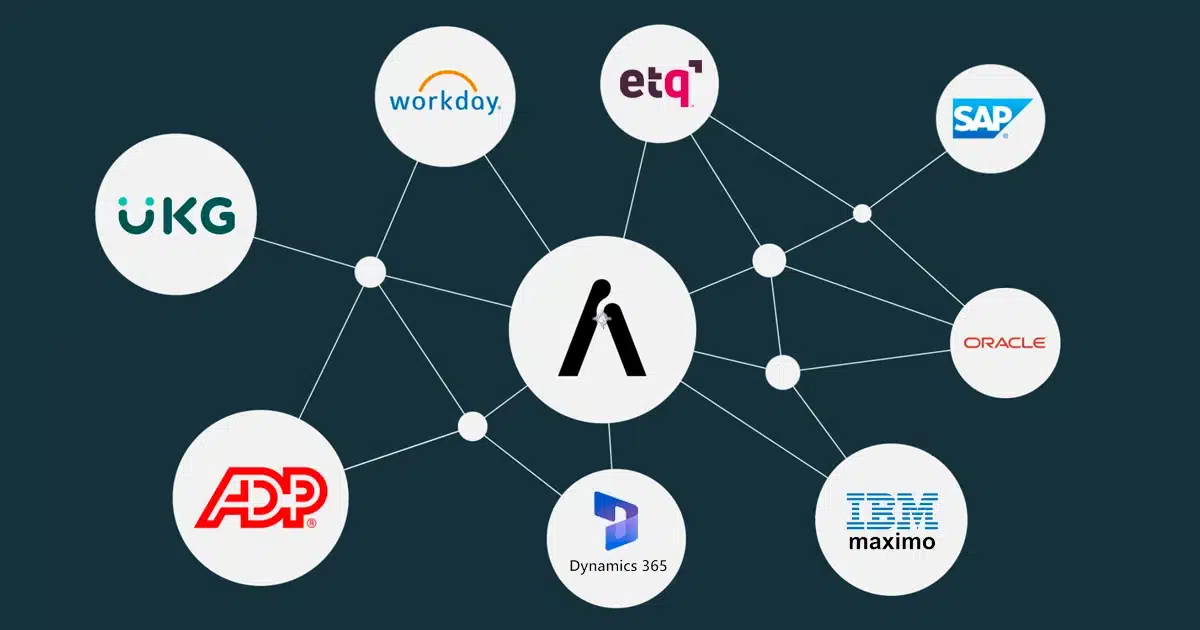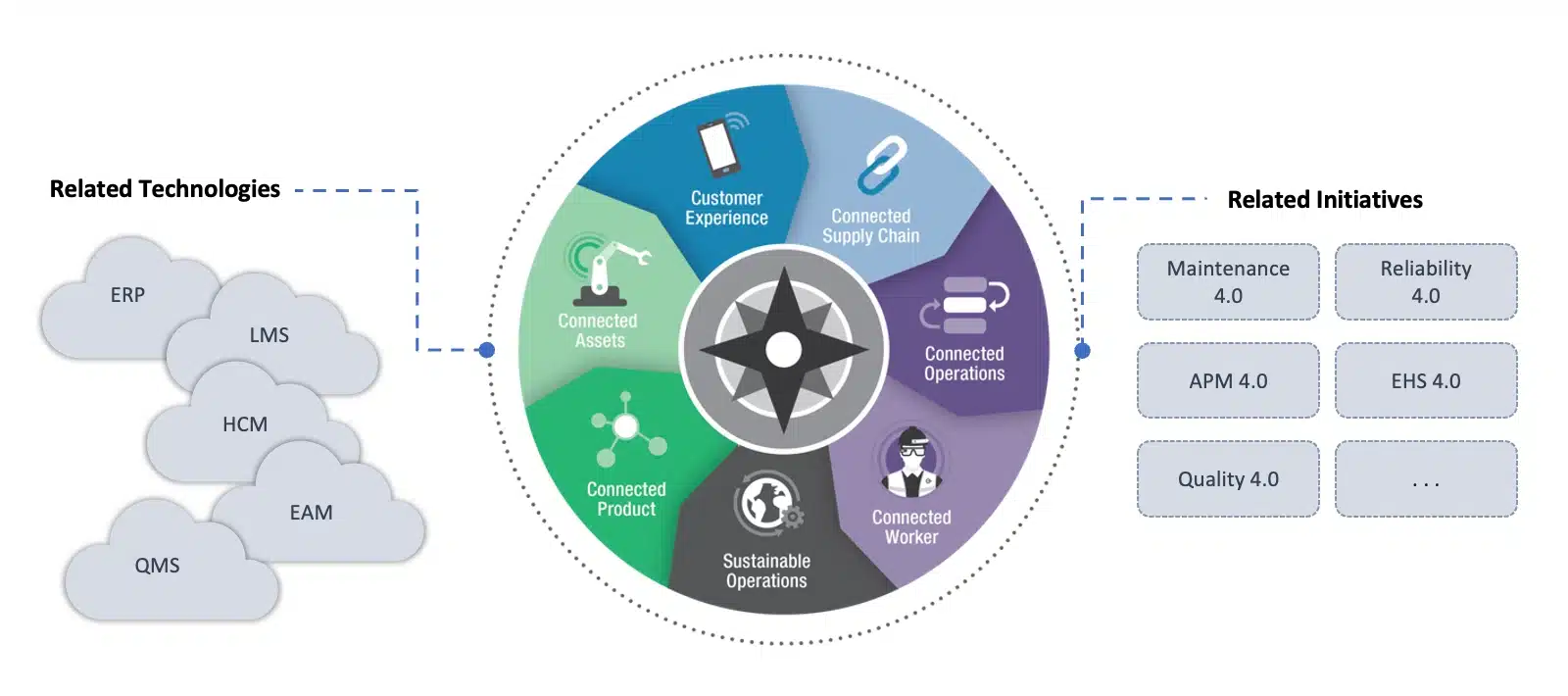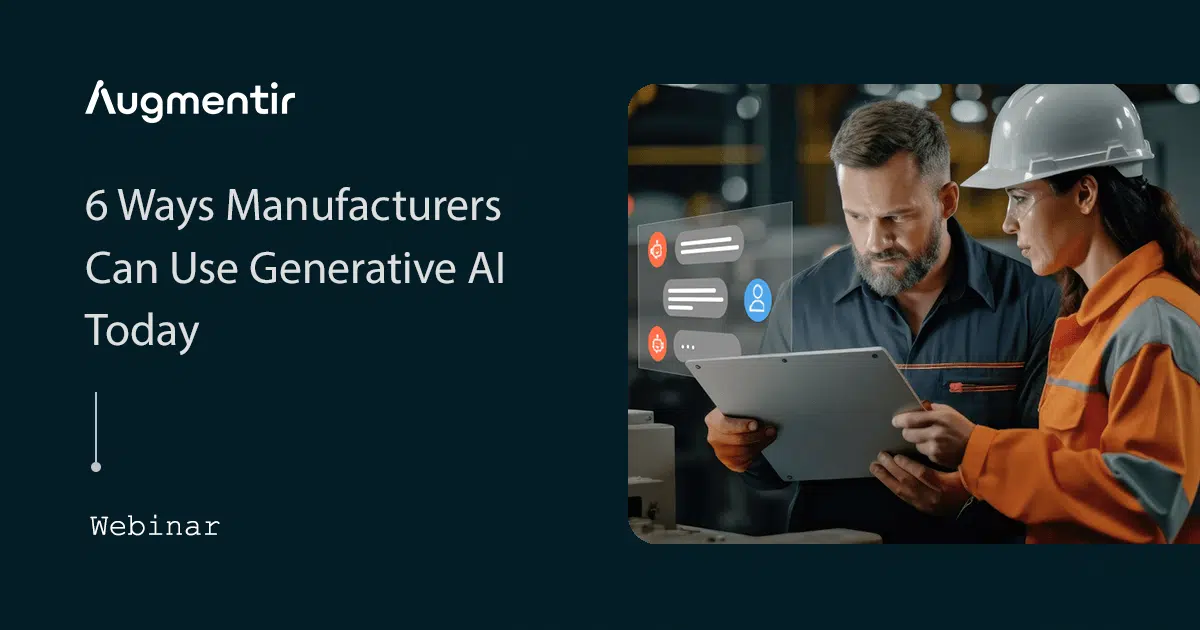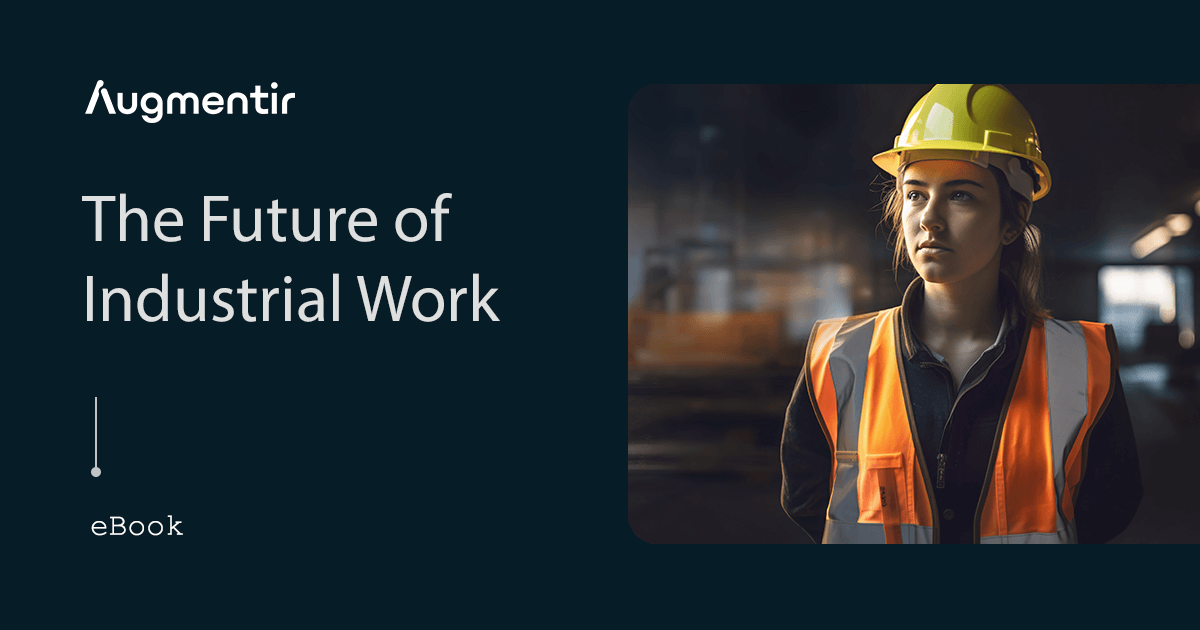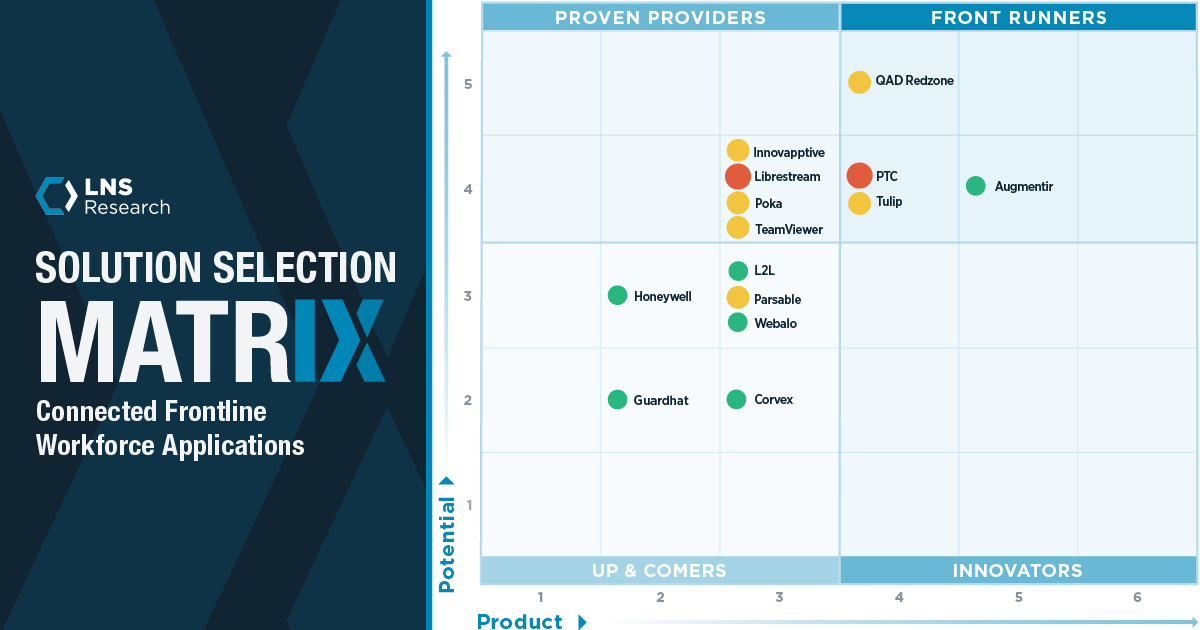Learn why integrations are key to the success of connected worker platforms, what systems should be integrated, and the benefits of a fully integrated connected worker solution.
Unlocking the potential of connected worker platforms becomes a game-changer when integrated with enterprise systems, giving them a live, closed loop connection to frontline processes and operations. This creates a truly connected enterprise that links diverse systems with the frontline workforce, paving the way for heightened efficiency, productivity, and safety.
However, a majority of connected worker platforms overlook the fact that connectivity doesn’t end with simply linking workers to their platform. They fail to recognize the immense benefits that live connections to enterprise systems of record bring to frontline business processes and activities.
Manufacturing success hinges on the seamless integration of connected worker platforms with legacy and enterprise systems to provide adequate support to frontline workers, giving them access to data and knowledge that can boost their efficiency and keep them safe.
Read below for more information on connected worker platform integrations; what they entail, which enterprise systems are essential for integration, and how AI-powered technology improves impact on frontline manufacturing activities.
- Connected Worker Integrations: More than just an API
- Which Enterprise Systems Should You Integrate
- Improving Integration Success Through Augmentir
Connected Worker Integrations: More than just an API
In manufacturing, it is critical that connected worker platforms are integrated with various enterprise systems to streamline operations and ensure that workers have the data and information they need at their fingertips. As critical as this is, most connected worker vendors believe that providing an open API is sufficient, and even boast that they integrate to enterprise systems, when in fact they place this burden on their customers.
Having an API is not enough
There are several not-so-obvious aspects to connected worker platform integrations, including:
- Connected worker integrations with enterprise applications, even streamlined ones, have essential requirements such as logic that needs to be written, customized, run, and supported. Most, if not all, of this logic is initiated by the connected worker platform, propagating events and data from shop floor processes to the associated enterprise system of record.
- Connected worker platforms with just an “API” require all of this functionality to be developed, hosted, and supported externally. The responsibility is then on the customer to build a custom product and select and support the hosting environment. This effort (building, hosting, and support) can cost between $50K and $150K to build and test, and then another $50K – $150K annually for 5 x 9 support. And, the customer is responsible for maintaining an SLA acceptable to the business (99.9% being typical).
It’s critical that connected worker platforms include “platform-as-a-service” (Paas) capabilities that provide the ability to write, support, and execute both standard and custom integrations. These can be done by the platform provider, the customer, as well as third-party system vendors and system integrators. Providing PaaS capabilities puts the responsibility on the vendor for operating the integration service, and maintaining SLAs, geo-redundancy, disaster recovery, and privacy and security. In short, just saying “we have an API” places an undue burden on customers, and prevents building the sustainable connected enterprise necessary to remain competitive in today’s global economy.
Which Enterprise Systems Should You Integrate
In any industrial environment, connected worker platforms should be integrated with various systems to support operations, help with cooperation and communication, and gain valuable insights into frontline manufacturing processes. These integrations streamline activities, improve efficiency, and provide a unified digital environment that empowers frontline workers.
This concept of a connected enterprise spans several initiatives within an organization: assets and equipment, the products being manufactured, the end customer, operations, workers, and the entire supply chain, and is highlighted below using the Industrial Transformation (IX) Reference Architecture from LNS Research.
Examples of enterprise management systems of record that are key to connected worker success and should be integrated are:
- ERP (Enterprise Resource Planning)
- EAM (Enterprise Asset Management)
- HCM (Human Capital Management)
- HR, Training, and LMS (Learning Management System)
- QMS (Quality Management Systems)
- MES (Manufacturing Execution System)
- CMMS (Computerized Maintenance Management System)
- Supply Chain Management
Enterprise systems such as ETQ, Workday, UKG, SAP, Oracle, IBM Maximo, Microsoft Dynamics 365, Salesforce, and ADP provide transformational value for a manufacturing company if they can be connected into frontline operations. By integrating connected worker platforms with these systems, manufacturers can create an interconnected environment that supports frontline workers and drives operational excellence. Ultimately, integration enhances collaboration, workforce visibility, decision-making processes, and overall operational efficiency, making connected worker platforms an indispensable component for manufacturing organizations.
Improving Integration Success Through Augmentir
At Augmentir, we see integrations differently than other connected worker platforms. Our rich history of building integrations in the manufacturing space enabled us to design a connected worker solution that easily, bi-directionally, and securely integrates the enterprise systems of record to create closed loop processes involving the frontline workforce.
Augmentir has internal PaaS services to run connectors that we build and support for popular enterprise applications like SAP, Salesforce, ETQ, Oracle, IBM Maximo, and more. Additionally, our PaaS enables custom integrations to be built and executed for custom, and niche applications. All third-party integrations running in the Augmentir connected worker platform carry the same SLA and geo-redundant support. By facilitating connected worker platform integrations with enterprise systems in this way, we have provided leading manufacturers with increased workforce visibility, improved productivity, digitized and standardized processes, enhanced training and collaboration, and more.
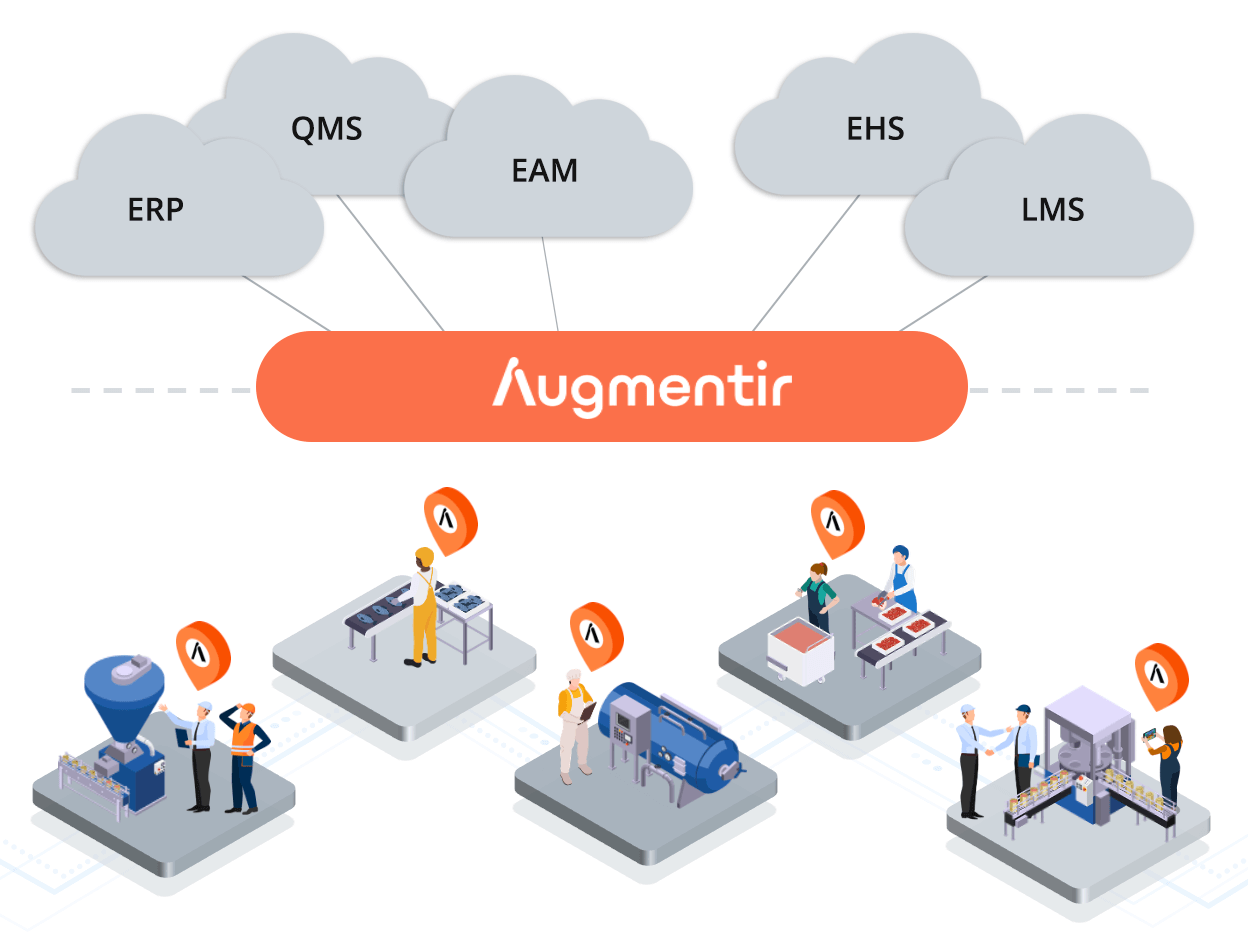
Furthermore, because we are the leading AI-powered connected worker provider, we have brought innovative generative AI technologies such as AI-driven analytics, machine learning algorithms, NLP, predictive maintenance, and industrial AI copilots to improve connected worker integrations with enterprise systems, providing real-time guidance, enabling predictive analysis, and enhancing communication and collaboration among workers.
Schedule a demo to learn more about our AI-powered connected worker solutions and how they are drastically improving frontline processes, training, and manufacturing activities.

